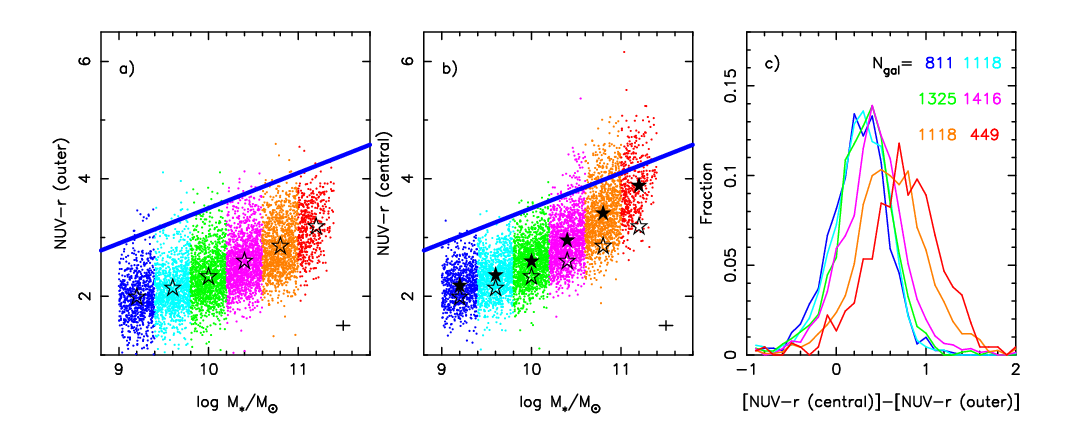For star-forming galaxies, there exists a relatively tight correlation between star formation rate (SFR) and total stellar mass (M*), which is often referred to the star formation main sequence (MS). The MS has been extensively studied and believed to follow a single power law form of . With more reliable SFR estimations, latest progresses suggest that the MS follows a broken power law form. Bellow a turnover mass of M*=1010.2 solar mass, the MS has a steep power law index of α~1.0. Above this mass α is much shallower and around 0.3-0.6, depending on redshift. Several possible mechanisms have been proposed to explain the curvature of the MS at M*=1010.2 solar mass yet need to be verified.
Pan et al. (2016, ApJ, 819, 91) study the star formation properties both inside and outside the half-light radius for a large sample of local star-forming galaxies, to verify whether bulge growth is responsible for the bend of the MS. They find the SFR of the outer regions still follows a single power law. Interestingly, the SFR of the central regions show a clear bend at the reported turnover mass. This study thus confirms that the growth of an old bulge component in massive star-forming galaxies gives rise to the turnover of the MS.

By with Zhizheng, Pan
Figure 1. a) The NUV-r (outer) versus. M* relation. In this work, NUV-r is used as a specific star formation rate indicator. The outer region refers to R>R50 , where R50 is the half-light radius of galaxies. b) The NUV-r (central) versus. M* relation. A clear bend is shown at the reported turn over mass. c) The distributions of NUV-r differences of these two regions.
This work is published in The Astrophysical Journal. More details can be found in
http://iopscience.iop.org/article/10.3847/0004-637X/819/2/91/meta
